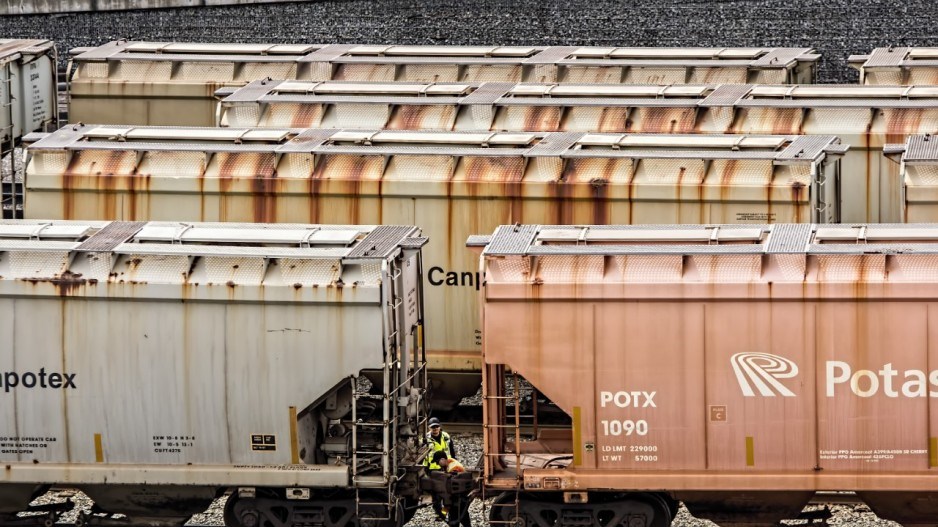Canada’s economy is ranked ninth largest in the world, even though its population is lower than all other nations in the top 10.
Despite an increasingly diversified economy, Canada still is largely a hewer of wood and drawer of water.
Natural resources are still pillars of Canada’s economy and make up a large portion of Canada’s most valuable exports.
The oil and gas sector employs an estimated 400,000 Canadians and mining employs more than 377,000, including 16,500 Indigenous workers.
According to Statistics Canada, forestry directly accounts for 1.2 per cent of Canada’s gross domestic product (GDP), mining 3.3 per cent and oil and gas 5.0 per cent.
“Those numbers may not seem large, but they’re quite large relative to other industries,” said Natural Resources Canada Minister Jonathan Wilkinson. “They tend to drive far greater GDP contributions when you look at suppliers to them and various other kinds of companies that tend to be supportive of the industry. And secondly, they also tend to be well-paid jobs.”
In Vancouver, a hub of professional services – from law firms to environmental services – specialize in serving Canada’s mining sector. A significant amount of manufacturing in B.C. is forestry-based, from veneer plants to paper mills.
When indirect contributions are included, Natural Resources Canada (NRCan) says resource industries account for 16.9 per cent of Canada’s GDP and 1.9 million direct and indirect jobs. By contrast, manufacturing accounted for 10 per cent of Canada’s GDP and 1.7 million jobs in 2019, according to Innovation, Science and Economic Development Canada.
Where natural resources play an outsized role in Canada’s economy is exports. Natural resource exports of $264 billion accounted for 48 per cent of Canada’s total merchandise value in 2019, according to NRCan.
As a gateway to Asian markets, B.C. benefits significantly from natural resource industries in other provinces, as commodities like potash from Saskatchewan, thermal coal from Alberta and wood products and minerals from Eastern Canada are exported through B.C. ports. B.C.’s clean-tech sector also serves resource industries across Canada.
Natural resource industries also account for significant amounts of direct foreign investment. NRCan estimates there is $589 billion worth of construction in natural resources industries either underway in Canada or planned over the next decade, with the lion’s share in energy ($500 billion), followed by mining ($82 billion).
Canada has the world’s third-largest proven oil reserves, is the fourth-largest oil exporter and the fifth-largest natural gas exporter. It rivals China as the world’s top exporter of wood products and ranks ninth in the world in mineral production value, according to online stats database Statista. According to a 2019 B.C. government economic report, forestry makes up 18 per cent of B.C.’s economy, mining 16 per cent and energy seven per cent.
Alberta contributes disproportionately to Canada’s GDP, thanks to its oil and gas sector. B.C. and Alberta are highly integrated when it comes to oil and gas, with Alberta companies investing billions in natural gas extraction and distribution in B.C., and the two provinces sharing a vast interconnected natural gas pipeline system that moves gas across Canada and into the U.S.
In terms of the share of nominal GDP just from natural resources, Alberta alone accounts for 32%, according to Statistics Canada. Ontario contributes the second largest share -- 20% -- with Quebec third at 16%, B.C. fourth at 13%, Saskatchewan fifth at 8%, and Newfoundland and Labrador sixth at 4.1%.
Provincially, natural resources account for 23% of Alberta’s GDP, 29% for Newfoundland and Labrador, 21% for Saskatchewan, 10% for B.C., 8% for Quebec and 5% for Ontario.
The fact Ontario natural resources provides 20% of Canada’s natural resources GDP but only 5% provincially is a reflection of Ontario’s diversified economy.
Ontario has Canada’s largest manufacturing base, and a sizeable services sector, so contributions to Ontario’s economy from industries like forestry and mining -- though large -- are comparatively small within the context of Ontario’s diverse economy.
The reverse is true in Canada’s north. Although the share of Canada’s GDP from natural resources in Northern Canada are comparatively small, natural resources account for a disproportionately large share of territorial wealth.
Natural resource industries, notably mining, account for 34% of Nunavut’s GDP, 20% for the Northwest Territories and 14% for the Yukon. Across Canada, more than 600 smaller communities are almost entirely dependent on a single resource industry, like a mine, sawmill or pulp mill.
While oil and gas industries are largely confined to western provinces and Newfoundland and Labrador, which has an offshore oil industry, most provinces have at least some forestry. Quebec, Ontario and B.C. account for the lion’s share of economic activity from forestry in Canada.
Canadian forests have reached a maximum sustainable yield, with not much room for growth, except in higher value-added manufactured wood products, and the demand for oil is expected to peak in the coming decades.
Every province and territory in Canada has some mining, with Quebec, Ontario, B.C. and Saskatchewan being the four largest mining regions.
Quebec produced $11.5 billion in minerals and metals in 2019, Ontario $10.8 billion, B.C. $8.8 billion, and Saskatchewan $6.2 billion. Quebec is Canada’s largest producer of iron ore and zinc, and second largest producer of gold.
Saskatchewan is the world’s largest producer of potash and has the world’s largest high-grade uranium deposits, accounting for 13% of global production of uranium.
Ontario has the greatest geological diversity, producing nickel, gold, copper, zinc and platinum. Ontario’s Ring of Fire is a significant mining play that is expected to generate $25 billion in economic activity in the coming decades.
B.C. is Canada’s largest producer of copper, the biggest producer of metallurgical coal and the only producer of molybdenum.
The energy transition is expected to require a six-fold increase in minerals and metals, which presents opportunities for pretty much every province and territory in Canada.
“I would say it’s a generational opportunity for us,” Wilkinson said. “I would say hydrogen is similar. It’s an enormous opportunity for almost every province.”




